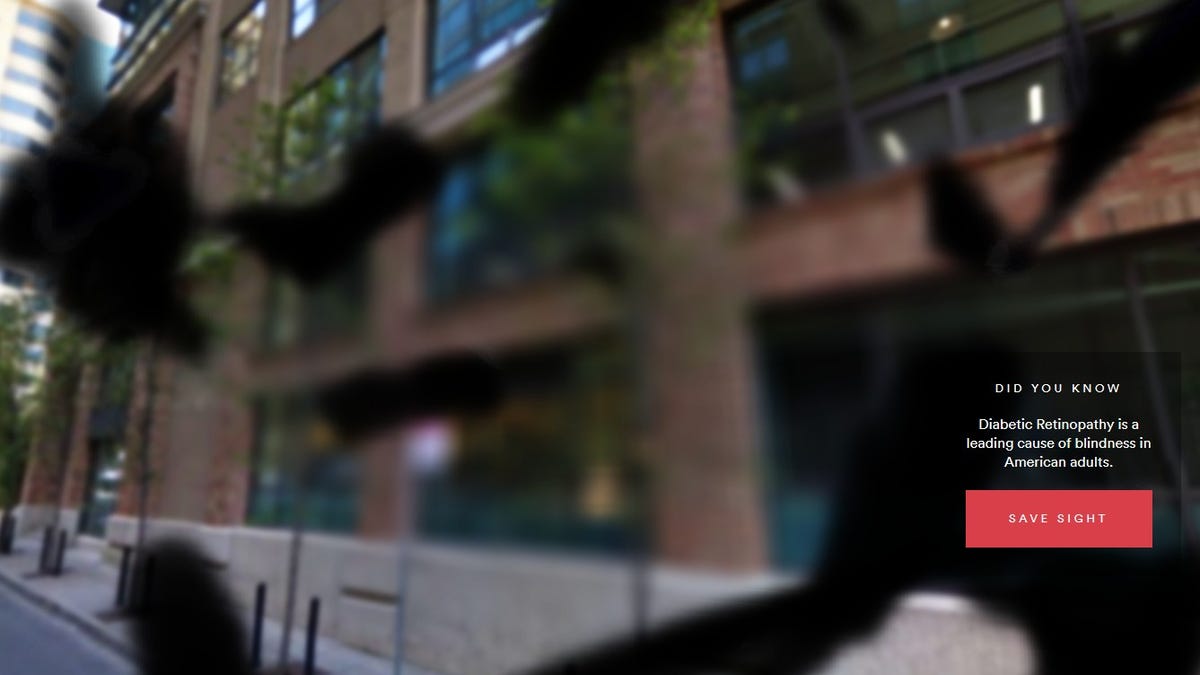Sight Simulator shows you what it's like to be legally blind
Ever wondered how the world looks to those with glaucoma or cataracts? A new interactive site lets you see for yourself.
What does the world look like if you're legally blind? A new interactive website lets you see through the eyes of those suffering from three conditions that impair sight.
The Sight Simulator is part of a campaign called See Now, aimed at increasing awareness of vision loss and calling for more Congressional funding to combat it in the US. The Simulator places filters that mimic the effects of cataracts, glaucoma and retinopathy on top of Google Street View images, enabling visitors to the site to move a slider and increase the severity of each ailment.
Looking at CNET's headquarters on the highest retinopathy setting showed me my familiar workplace blurry and obscured by dark splotches. With the glaucoma setting at its highest, I only saw a bright oval surrounded by black. The cataracts filter displayed a building so fuzzy it was hard to discern details.
"We believe when people experience what it would be like to lose their sight, from seeing what their own street looks like with poor vision, they will appreciate the problem in a way they never did before," Erin McCallum of the See Now campaign said in a statement. "Hopefully this will motivate many people to look after their own eye health and push them to take action to help prevent blindness in others."
The minimum setting on the site for all three conditions shows a view matching legal blindness. It's defined in the US as central visual acuity of 20/200 or less in the better eye with the best possible correction, and/or a visual field of 20 degrees or less, according to the American Foundation for the Blind.
"Legal blindness is not binary," the See Now site points out. "For most people with vision impairment, it's not a matter of seeing nothing versus seeing clearly. The reality is somewhere in between."
Yet four out of five people who are blind don't need to be, See Now asserts, saying a single doctor's visit or screening can prevent or cure the world's most common vision problems.
The See Now campaign was created in partnership with Prevent Blindness, an organization devoted to fighting blindness and saving sight, and is calling for increased federal funding to tackle eye health. More than 47,000 people have signed a petition asking Congress to dedicate $6.3 million to making eye care across the country more accessible.
This isn't the first time digital tools have helped the public view a health condition from a personal perspective.
A few years back, a campaign to increase awareness of the most common form of dementia put people in Facebook photos of fake events, aiming to give them a momentary sense of the confusion the disease can cause.
The cataracts filter, at its most severe setting, renders a familiar sight fuzziness.
CNET Magazine: Check out a sampling of the stories you'll find in CNET's newsstand edition.
Life, disrupted: In Europe, millions of refugees are still searching for a safe place to settle. Tech should be part of the solution. But is it? CNET investigates.


